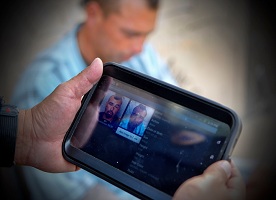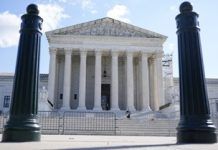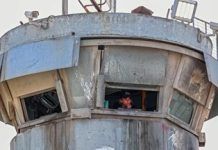The Los Angeles Police Department has used facial-recognition software nearly 30,000 times since 2009, with hundreds of officers running images of suspects from surveillance cameras and other sources against a massive database of mugshots taken by law enforcement. The new figures, released to The Times, reveal for the first time how commonly facial recognition is used in the department, which for years has provided vague and contradictory information about how and whether it uses the technology.
The LAPD has consistently denied having records related to facial recognition, and at times denied using the technology at all. The truth is that, while it does not have its own facial-recognition platform, LAPD personnel have access to facial-recognition software through a regional database maintained by the Los Angeles County Sheriff’s Department. And between Nov. 6, 2009, and Sept. 11 of this year, LAPD officers used the system’s software 29,817 times. More than 300 LAPD personnel have access to the software.
Josh Rubenstein, an LAPD spokesman, said he could not determine how many leads from the system have developed into arrests, but that the technology has helped identify suspects in gang crimes where witnesses were too fearful to come forward and in crimes where no witnesses existed. He said it has helped officers solve crimes faster than they otherwise would, and confirmed that it was recently used by the SAFE LA task force — a coalition of law enforcement agencies investigating arsons, burglaries and other crimes that occurred during protests in the city this summer.
In a recent test, facial recognition software incorrectly matched 26 California legislators with mug shots of people who had been arrested. California is considering banning such software from being used with police body cameras. Records reviewed by The Times also indicate that LAPD officers arrested a man in June on suspicion of sexually assaulting minors after identifying him with the help of facial recognition. LAPD Assistant Chief Horace Frank said “it is no secret” that the LAPD uses facial recognition, that he personally testified to that fact before the Police Commission a couple years ago, and that the more recent denials — including two since last year, one to The Times — were just mistakes.
“We aren’t trying to hide anything,” he said.
Civil liberties advocates disagree. They said the recent denials — only corrected after The Times questioned their accuracy — are part of a long pattern of deception in which the LAPD has systematically avoided discussing facial recognition by denying it has records related to the technology or by claiming, erroneously, that it doesn’t use it. As such technology improves and becomes more pervasive, transparency around the government’s use of it becomes all the more important — and the LAPD’s actions all the more concerning — given the potential for privacy and civil rights infringements, advocates say.








